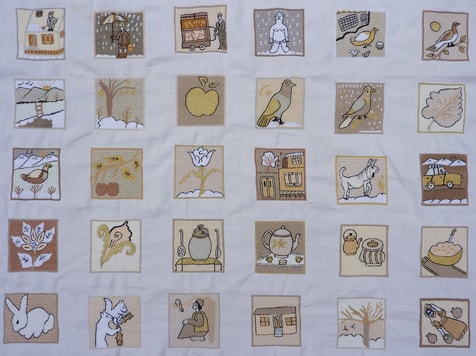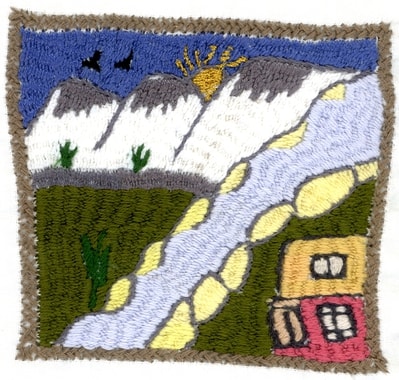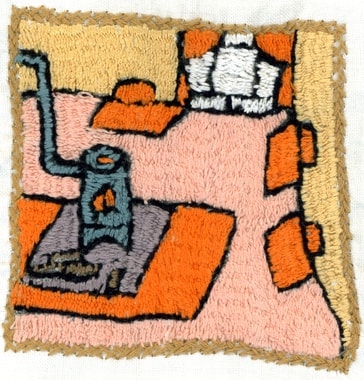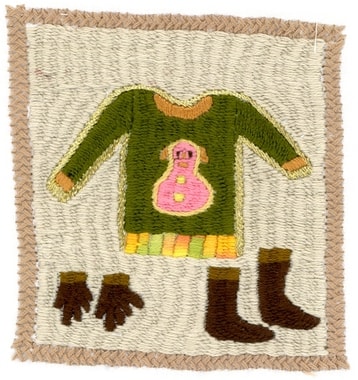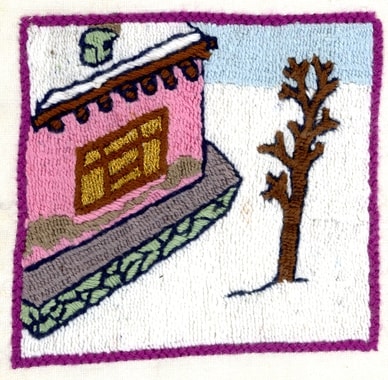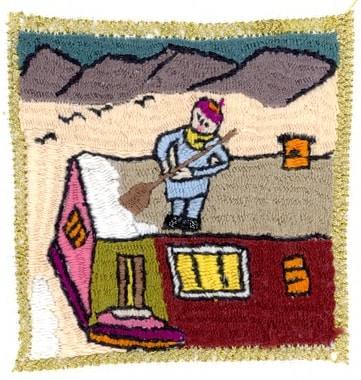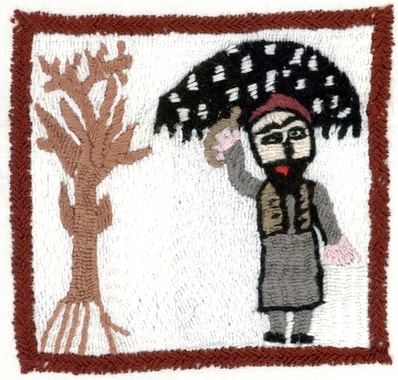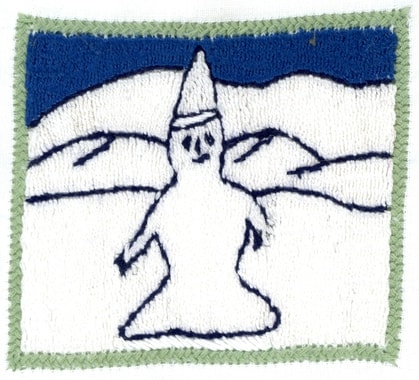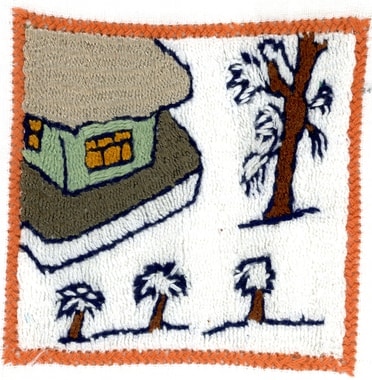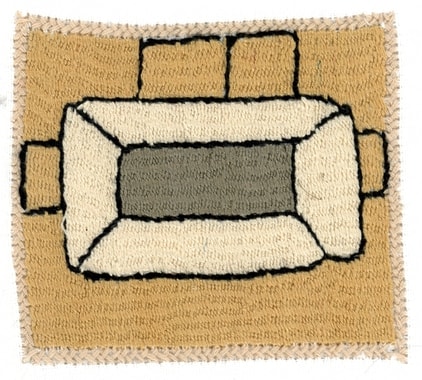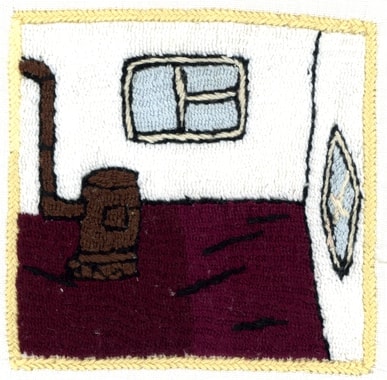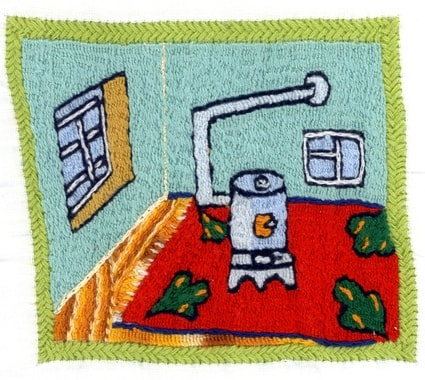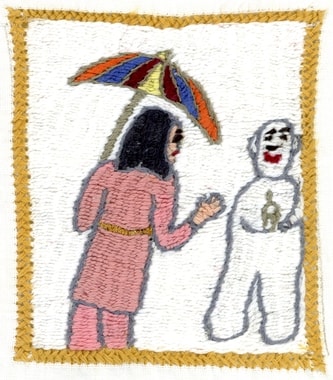Special journey
Special journey
In September 2012 Sarah and I went to Afghanistan. We wanted to try out something different and ask the women to create a special winter collection for us. We met as usual with Shamin in Kakara and asked for her cooperation. She agreed to help.
Normally the embroiderers are given the amount of yarn they will need for the number of squares to be embroidered. For this project we used a different approach. We gave Shamin a box of yarns in cool natural shades, including a large amount of white, and let the women choose. The colour scheme was supposed to suggest a wintery mood and we asked the women to use these cold colours to depict scenes or capture the mood of the cold winter season.
The experiment failed for the following reasons:
It took the embroiderers a long time to decide which yarns to choose, in particular because their beloved bright colours were missing. An additional problem was that Shamin’s room was too small for all of them to fit, and many had to wait their turn outside in the cold. (I later apologized to them for the inconvenience in my quarterly newsletter.)
When the finished embroideries arrived in Freiburg we discovered that only Rahima’s work depicted winter scenes and moods while the other embroiderers had done only one or two winter squares, the rest was as bright as always – they had simply used bright yarns left over from previous work. Don’t they like white? Did they not want to think about this idea or come up with new designs? Or did winter simply leave them without energy?
We heard that there was snow everywhere, not just in the mountains. Roofs had to be cleared. Umbrellas were used to protect from the snow, hats and scarves were needed and children made snowmen just as they do here. To keep warm sandali are used, frames covered by a quilt, and people sit underneath with a tin of glowing embers and the bokhari (a woodburning stove).
rning stove).


